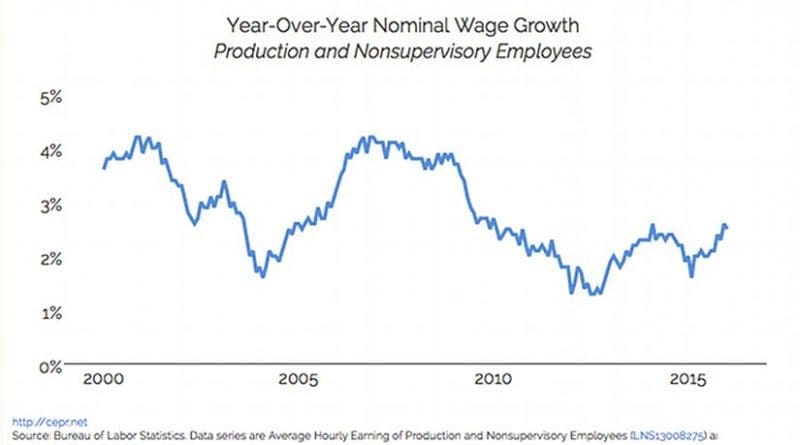US Job Growth Slows In January, Unemployment Falls To 4.9 Percent – Analysis
By Dean Baker
The US Labor Department reported the economy added 151,000 jobs in January, in line with some economists’ expectations. There were largely offsetting revisions to the prior two months data leaving the average change over the last three months at 231,000. The household survey showed a jump in employment that both lowered the unemployment rate to 4.9 percent and also raised the employment-to-population ratio (EPOP) to 59.6 percent. This is the highest EPOP of the recovery, but it is still more than 3 percentage points below the pre-recession level.
The slowing of job growth was sharpest in construction and the temp sector. The former added 18,000 jobs after adding an average of 56,500 jobs in the prior two months. The temp sector lost a little over 25,000 jobs in January after a reported gain of the same size in December. The big job gainers were retail with a gain of 57,700; restaurants, which added 46,700 jobs; and health care with a gain of 36,800. Both restaurants and retail were likely helped by unusually good weather. (The storms hit after the survey period.)
Manufacturing added 29,000 jobs after adding 13,000 in December. This growth is surprising since other data, such as the Fed’s industrial production measure, show growth in the sector to be weak. Government employment fell by 7,000, with drops of 8,000 at the federal level and 10,000 at the state level, partially offset by a rise of 11,000 at the local level. One anomaly depressing job growth in January was a reported drop of 14,400 in couriers. This followed a rise of 10,600 in December.
There was a large 12 cent jump in the average hourly wage in January, but this followed a month in which there was no reported rise at all. Over the last three months the wage has risen at a 2.5 percent annual rate compared to the prior three months, the same as its pace over the last year. There is little basis for the belief that wage growth is accelerating. The Employment Cost Index for the fourth quarter showed no uptick at all in the pace of compensation growth, with wage growth in the private sector actually slowing slightly.
On the household side, there was another large increase in labor force participation, with 284,000 entering the labor force, after adjusting for changes in population controls. Employment rose by 409,000 after the adjustment.
Other news in the household survey was mixed. The number of involuntary part-time workers fell again and is now down by almost 800,000 over the last year. The number of people who choose to work part-time rose slightly. It is now up by almost 500,000 from its year-ago level. This is a predictable effect of the ACA as people no longer need to work full-time to get health care insurance through their jobs. Over the last three years, involuntary part-time employment has fallen by 2,040,000, while voluntary part-time has increased by 1,930,000.
On the negative side, the unemployment rate for African Americans rose by 0.5 percentage points and for African American teens by 1.5 percentage points. This indicates the drops reported in December were a blip. The percentage of unemployment due to voluntary job leavers also dropped in January, falling to 9.9 percent. This is a level more consistent with a recession than a strong labor market. One clearly negative item is that the duration of unemployment measures all increased in January with the median length of unemployment spells rising by 0.4 weeks and the average by 1.3 weeks. The share of long-term unemployed also rose.
Employment by education level is not following the standard script with the employment rate for college grads falling by 0.3 percentage points in January. It is down by 0.4 percentage points over the last year. The only group with a rise in employment rate over the year is workers without high school degrees.
The overall picture in this report is mixed. The sharp slowing in job growth was to be expected, given the slow growth reported in the economy. The labor market is still not tight enough to produce healthy wage growth. With many downside risks to growth, 2016 may not be a good year for workers.

